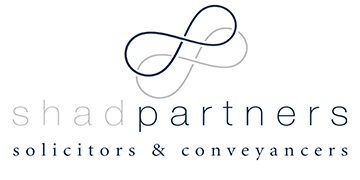You may know someone who is having difficulty managing their financial affairs and has debts and liabilities which they cannot meet. They may be considering declaring themselves bankrupt. Before they do so, consideration should be given to some alternatives which are available aside from becoming bankrupt and which we have outlined below.
Informal agreement
An informal agreement is an arrangement made between a debtor and their creditors to settle their debts. Informal agreements are typically the first option considered by a debtor because they are less expensive to administer than formal agreements and allow a debtor to retain control of their financial affairs.
Informal agreements are most likely to proceed when there are a small number of creditors and the agreement is proposed as soon as the debtor is unable to meet their financial commitments.
Declaration of intention to present a debtor’s petition
An individual debtor can file a Declaration of Intention to Present a Debtor’s Petition (Declaration) to the Official Receiver. Filing a Declaration is a way of announcing that the person is considering declaring themselves bankrupt.
The effect of filing a Declaration is that a debtor does not have to pay their debts for a period of 21 days and any proceedings by creditors to recover their debts are stayed.
If a debtor is able to reach an agreement with their creditors within the 21 day period, the debtor does not have to proceed with filing for bankruptcy.
Creditor’s petitions and changes to bankruptcy laws pursuant to COVID-19
New temporary laws have been introduced to provide temporary relief from individuals facing insolvency issues due to financial pressures created by the COVID-19 crisis. These laws are proposed to apply for 6 months (once legislated) which will effectively:
- increase the threshold for the minimum amount of debt owed from $5,000 to $20,000 before a creditor can initiate bankruptcy proceedings;
- extend the timeframe for which a debtor must comply with a bankruptcy notice from 21 days to 6 months;
- in circumstances where a debtor has declared an intention to enter voluntary bankruptcy, extend the timeframe for which a debtor is protected from an unsecured creditor taking further recovery action from 21 days to 6 months.
Debt agreement
A debt agreement is a legally binding agreement between a debtor and their creditor to release them from their debts. The agreements are generally available to people with small debts, few assets and low incomes.
To be eligible to enter into a debt agreement, a debtor must:
- have income below a certain threshold;
- have debts below a certain threshold; and
- not have been made bankrupt in the past 10 years.
To initiate the process, a debtor must submit a written proposal to the Official Receiver for a binding agreement between the debtor and their creditors. The proposal must identify the assets of the debtor, how they shall be dealt with and who shall co-ordinate the debtor’s proposal (for example, the Official Receiver, a registered trustee or another person). Some examples of proposals include providing an undertaking to repay a smaller debt or payment of the debt by instalments.
If the proposal is accepted by the Official Receiver, the Official Receiver writes to the creditors asking them whether they accept the proposal. The proposal is accepted if a majority of creditors (by reference to the value of the debt) vote in favour of the proposal. The effect of a debt agreement is that creditors cannot take action to recover their debts. However, a debtor’s details will appear on the National Personal Insolvency Index and will be recorded by credit reporting agencies.
It is important to note that by making a proposal to creditors under a debt agreement a debtor commits an act of bankruptcy and if the debtor’s proposal is not accepted, a creditor can apply to Court to bankrupt the debtor.
Personal insolvency agreement
A personal insolvency agreement (PIA) is similar to a debt agreement, except there are no limits on income and assets owned by the debtor and the total debt owed. There are more significant costs involved in proposing a PIA and the arrangement is better suited to debtors with higher incomes and a number of assets.
The PIA is managed by a controlling trustee who undertakes an investigation into the debtor’s financial position and then calls a creditors meeting to vote on any proposal. The advantages of a PIA are that it allows a debtor to continue to carry on business (which is difficult for a person once declared bankrupt) and there is no requirement for a debtor to contribute property or income acquired after the PIA to their estate.
Again, a debtor commits an act of bankruptcy by signing the formal authority required to make a proposal to creditors.
Conclusion
Formal steps to manage bankruptcy should not be taken lightly, as they can have long term adverse effects on a debtor and their employment options and ability to obtain credit.
If you or someone you know wants more information or needs help or advice, please contact us on 02 9790 7000 or email [email protected].
